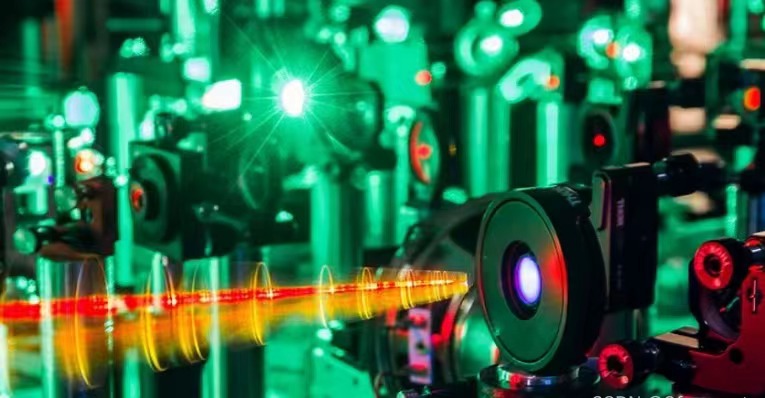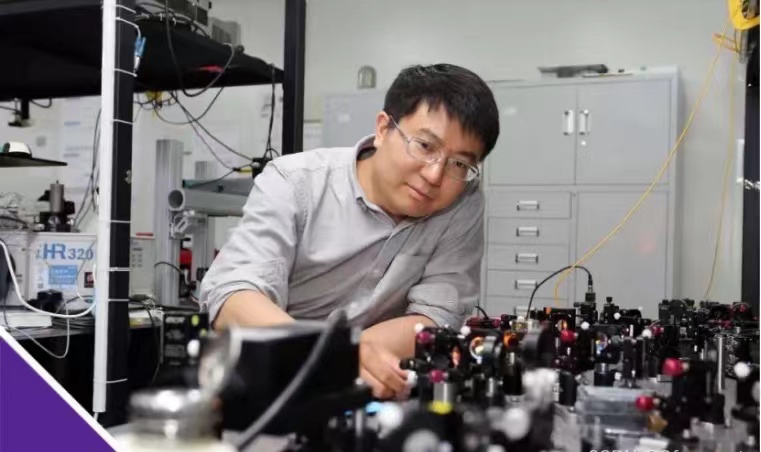The first batch of 28 projects from Tianjin University (TJU), all of which are key and core technologies, was introduced to Tiankai Higher Education Innovation Park, an incubation hub and high-tech industrial park. The Ultrafast Laser Laboratory of TJU, which remains in line with the international trend and is always at the forefront of femtosecond laser technology, was also established in the park, accelerating the commercialization of its research accomplishments and putting it into practice the idea of "conducting research and publishing achievements in motherland”.

"These support pillars are glass columns cut by ultrafast lasers and then made invisible by a fire. And thermal insulation, sound insulation and explosion-proof parameters need to be tested further." Hu Minglie, head of the Ultrafast Laser Laboratory and professor of the School of Precision Instrument and Opto-Electronics Engineering at TJU, led a team to test a piece of double-glazing with a dot matrix. " This double-layer vacuum glass, in virtue of femtosecond laser welding technology, can reach or even exceed the thermal and sound insulation capacity of four layers, three-cavity building materials glass. Over 70% of China's carbon emissions are from building materials, and a large part of the emissions are from glass. If such energy-saving glass can be widely used, it can efficiently save energy and greatly reduce emissions." The development of high-power glass welding equipment with femtosecond laser is one of the projects Professor Hu brought to Tiankai Higher Education Innovation Park.
Since femtosecond laser came into being, the Ultrafast Laser Laboratory has kept pace with the international community, becoming the leader in this field in China. It has achieved a number of innovative research results with international impact and has published over 400 high-level papers in top academic journals at home and abroad. With the advantage of femtosecond laser technology, the laboratory has made remarkable achievements in the crossover research of precision ranging, micro and nano processing, biophotonics, etc. For instance, it has firstly achieved to modulate cellular calcium signaling by femtosecond laser in the world. And for the first time, the internal dynamics of optical soliton were synchronized in a femtosecond laser oscillator using all-optical modulation. These scientific achievements have been published many times in Nature Photonics, Laser & Photonics Reviews, Optica and other top journals.

"Many basic and common advanced technologies can be provided by university laboratories, which will greatly promote industrial upgrading and innovation if applied properly. For example, the School of Precision Instrument and Opto-Electronics Engineering of TJU has studied femtosecond laser technology over the past four decades. And our ultra-short pulse laser plays a key role in a number of high-precision processing fields. It was applied to a special cold processing technology that helps to avoid material cracking, breaking and melting in precision processing. We have worked with equipment manufacturing companies to develop wafer slicing equipment for chip manufacturing, which is used for chip cutting. It has worked so well that it has started to be rolled out.” Professor Hu said. He told the reporter that settling in Tiankai Higher Education Innovation Park facilitate the implementation of projects in the laboratory. Since the park is near both universities and industrial parks, and is a cluster of high-tech enterprises, there are more chances to apply scientific research achievements.
After settling in the park, the preliminary work of the Ultrafast Laser Laboratory will mainly focus on precision detection and manufacturing equipment using femtosecond laser. For example, glass welding equipment using femtosecond laser has been applied in the building glass industry at present, and will gradually expand to the photovoltaic field later. With the promotion of green and low-carbon development policies, there will be a broad market space for its application. In addition, engineering prototypes of wafer dicing equipment using femtosecond laser have been provided to chip research teams in universities, achieving satisfactory results. And ultra-fast laser can be also widely used in consumer electronics of industrial manufacturing, such as cutting optical glass (a hard and brittle material), cutting special materials with electronic integrated circuits (a hard and brittle material) and many other aspects. Once applied to right scenarios, this technology will be quickly commercialized.
“Scientists are not those who, as an old Chinese saying goes, ‘pay no attention to what is going on beyond study and bury themselves in the classics’. Their research work has not disconnected from the market, instead, it meets the market demands well. Many laboratories in Europe and the United States, whose fundamental research and frontier technologies lead the development of the industry, are the hidden champions in the industry. And our vision is to be such a hidden champion." Professor Hu said.
By: Dang Xinuo
Editor: Qin Mian






